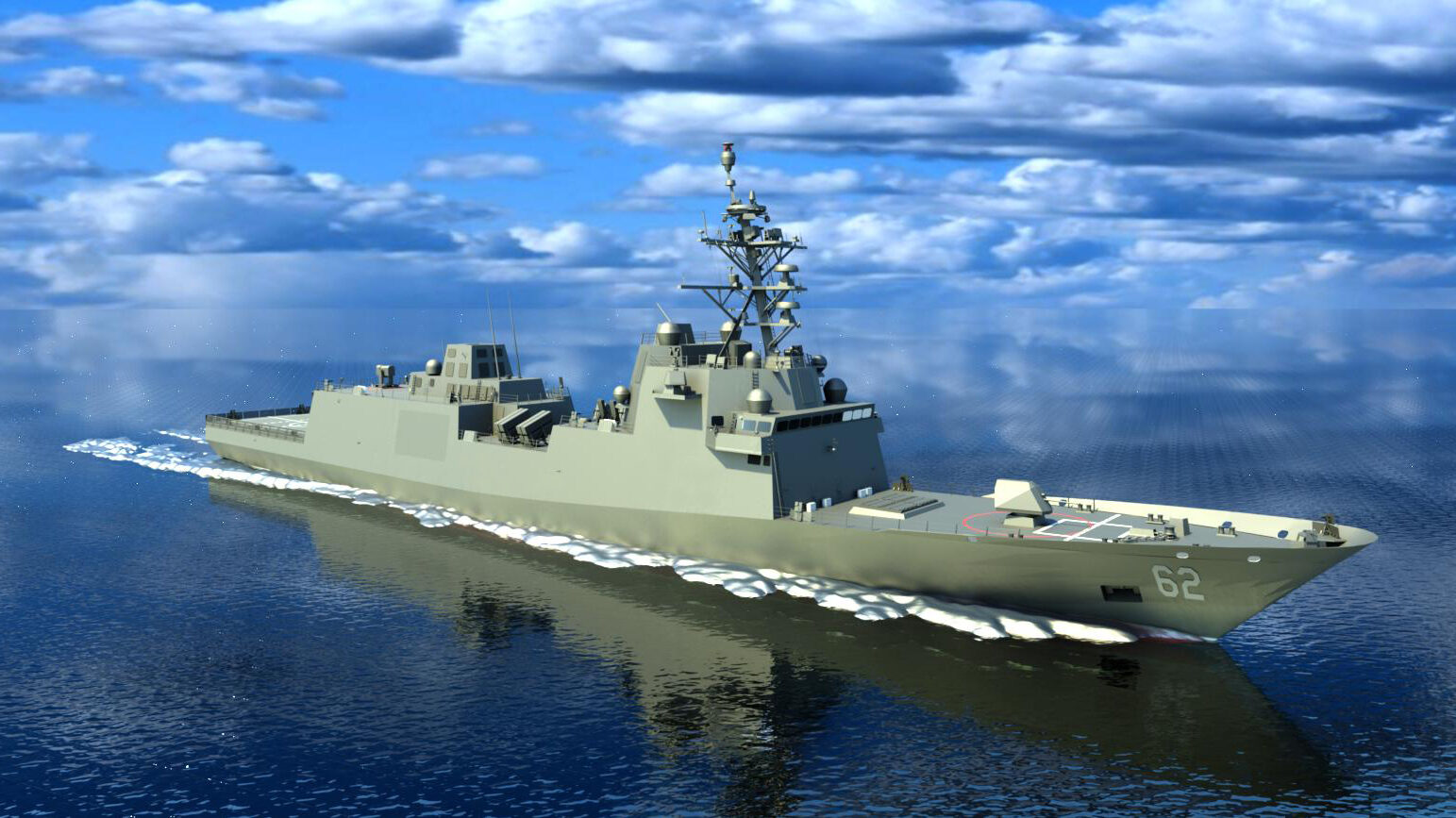
A graphic of Fincantieri Marinette Marine’s Constellation-class frigate. (Courtesy of FMM.)
WASHINGTON: A Senate committee overseeing the Navy’s budget is so uneasy about how quickly the service may move to award a second shipyard contract for the Constellation-class frigate that it wants the Navy to show in writing what its done to reduce “unneeded risk” prior to signing a deal.
The additional barrier is the latest hiccup resulting from the Navy’s eagerness to push the ship forward and lawmakers’ concerns that the program could suffer the same mistakes as its predecessor.
“The committee is concerned that prematurely adding a second CCF shipyard before the first shipyard has identified and corrected technical and production issues will inject unneeded risk and complexity into the program,” the Senate Appropriations Committee wrote in a report accompanying their draft fiscal year 2022 defense spending bill. Lawmakers published nine spending bills and supplemental legislation on Monday.
Fincantieri Marinette Marine last year was selected to build the first handful of next-generation frigates, but both lawmakers and those in the industry have been keen for hints from the Navy about the potential for a second production contract. The service made it a requirement in its FFG(X) proposal that industry be able to provide a technical data package for the government to ultimately hand off to another company.
Most signs point to the Navy moving forward with a second shipyard for the new frigate. Recognizing that, Senators would direct the Navy secretary to prove the service has ironed out the details of Constellation’s lead ship.
The committee’s bill directs the service to “prioritize the following objectives: technology maturation and risk reduction for critical shipboard components; major systems integration; full ship technical data package creation; and successful operationally realistic testing for the first ship.”
“The Committee directs the Secretary of the Navy to submit a report not later than 90 days prior to awarding a contract for the second CCF shipyard to the congressional defense committees outlining the acquisition strategy for achieving the full frigate program of record and meeting these technology maturation and risk reduction objectives,” lawmakers wrote.
The Senate committee also noted the past problems the Navy has had specifically with unexpected costs associated with first-of-class vessels, an issue the Government Accountability Office has investigated thoroughly. In fact, the majority of recent lead vessels of the past dozen the Navy has delivered all experienced cost growths, GAO reported in 2018.
As lawmakers have gone back and forth with the service about the new frigate, the problematic history the Littoral Combat Ship has come often up as reason to move forward slowly and carefully with Constellation.
The Navy’s argument to assuage congressional concerns has mostly rested on the ship having a reliable parent design, specifically the Italian FREMM. However, a report from the Congressional Research Service in September outlined just how different the Constellation class will be from its parent design, as Breaking Defense reported.
Some of the changes include the bow design being modified to remove the sonar dome and enclosure deck for stability, the ship’s displacement being increased by about 500 tons and the hull length being increased by 23.6 feet to accommodate larger generators and future growth, according to the report.
Constellation class is still a relatively young program with its first ship not scheduled to join the fleet until 2025, but if the Navy does seek a second yard, most eyes will be on four companies in particular: General Dynamics Bath Iron Works, Huntington Ingalls Industries, Lockheed Martin and Austal USA. Those four shipyards were ultimately beaten by Fincantieri during the original FFG(X) competition.
Major trends and takeaways from the Defense Department’s Unfunded Priority Lists
Mark Cancian and Chris Park of CSIS break down what is in this year’s unfunded priority lists and what they say about the state of the US military.


























